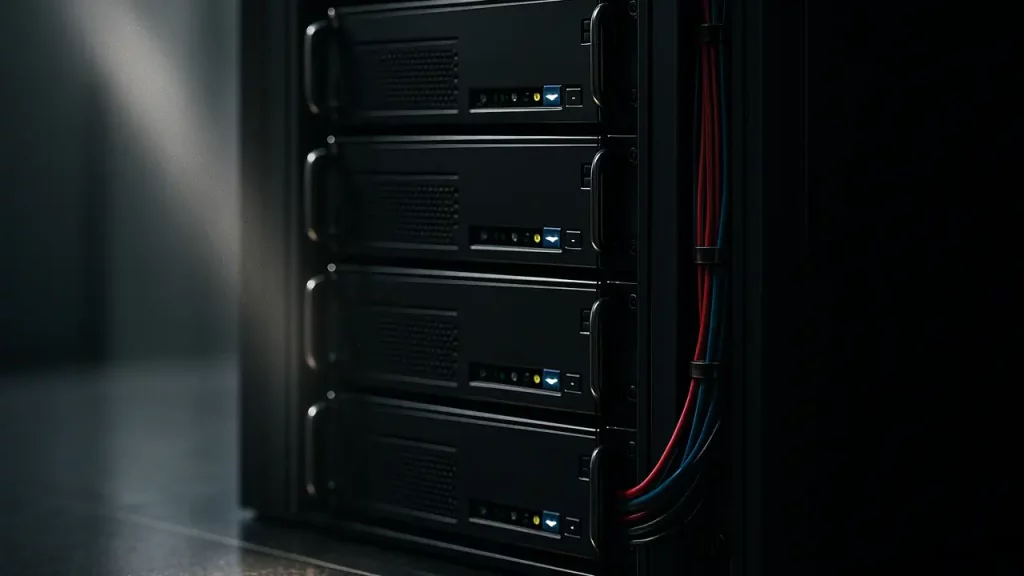Open-Weights LLM for Small Business: 7 Proven Wins
1. Introduction to Open-Weights LLMs for SMBs: Benefits, Use Cases, Risks, and TCO
Open-Weights LLM for Small Business. Open-weights large language models (LLMs) are reimagining how small and medium-sized businesses (SMBs) approach artificial intelligence. By making the weights of powerful AI models available for public inspection and deployment, open-weights LLMs offer unprecedented advantages in cost control, privacy, and customizability over entirely closed offerings like OpenAI GPT or Google Gemini. An IDC survey indicated that over 51% of generative AI use cases will soon leverage open-weights solutions, underscoring the business shift toward flexible, private, and affordable AI platforms.
Key benefits for SMBs include:
- Transparency: Access to model weights enables deep customization—tailoring the LLM to unique workflows that out-of-the-box APIs can’t accommodate.
- Cost efficiency: SMBs bypass per-request or subscription fees by deploying models on internal infrastructure, achieving significant long-term savings for high-usage applications.
- Data privacy and sovereignty: Hosting LLMs on-premises or in a private VPS ensures sensitive business data never leaves the organizational perimeter—a vital requirement for healthcare, legal, and financial SMBs subject to regulations.
Popular SMB use cases:
- Chat support bots: Automating customer support while retaining brand voice and knowledge.
- Document and application summarization: Rapid extraction of insights from long emails, contracts, or reports.
- Specification and report generation: Creating proposals, quotes, or technical specifications from structured data.
- Retrieval-Augmented Generation (RAG): Combining an internal vector database with an LLM to provide accurate, document-grounded answers without exposing proprietary info.
Sample stack: The “basic recipe” involves deploying a quantized LLM (e.g., Mistral, Llama, Qwen) on a virtual private server (VPS) with a vector database (e.g., ChromaDB) and a Retrieval-Augmented Generation (RAG) pipeline. Alternatively, managed platforms like Amazon Bedrock offer per-token billing and mature guardrails for teams lacking DevOps muscle.
However, risks and total cost of ownership (TCO) must be considered:
- Technical complexity: Self-hosting requires AI expertise for setup, monitoring, patching, and optimization.
- Fine-tuning overhead: Achieving peak accuracy for domain-specific tasks may demand expensive training cycles, even as base model weights are free.
- Security and license pitfall: Misreading open-weight vs. open-source signals can lead to costly compliance errors or license violations, especially when combining adapters (LoRA) or model merges.
- Hidden costs: Storage, logging/observability, backups, and ongoing hardware upgrades can offset the initial “free” nature of open-weights LLMs.
In summary, open-weights LLMs deliver transformative value for SMBs when the use case justifies ownership and privacy, but the route to production involves more than a simple download—it requires a clear understanding of costs, stack requirements, and compliance boundaries.
Ready to roll in a week? Take our 7-day AI course – simple step by step plan with project:

2. Llama License for Commercial Use: How to Stay Compliant
Meta’s Llama series, especially Llama 3 and Llama 4, encapsulates the modern “open weights but not fully open source” licensing paradigm. For SMBs considering Llama, it is essential to interpret the Meta Llama Community License and related policies properly to avoid both legal risks and downstream integration issues.
Critical features of the Llama license:
- Permissive for most SMBs: Llama weights can be downloaded, modified (fine-tuned), and used in commercial products and services, provided the application doesn’t cross 700 million monthly active users (“MAUs”)—a threshold that excludes only top-tier hyperscalers.
- Mandatory attribution: All products/services must clearly display “Built with Meta Llama 3” (or appropriate version) in user-facing documentation or application UI.
- Derivative naming: If you distribute a fine-tuned model, its name must begin with “Llama”—ensuring any derivative extends the Llama brand ecosystem.
- License propagation: A copy of the Llama Community License must accompany any redistribution or derivative, and the model’s copyright notice must be preserved.
- Brand and region restrictions: Llama 4, notably, bans any use by entities domiciled in the European Union. No exceptions, including for research or indirect cloud deployments—making it off-limits for EU-based SMBs.
- Acceptable Use Policy (AUP): Certain fields are restricted (e.g., providing unauthorized legal/medical advice). The AUP prohibits model use for illegal acts, hate speech, professional advice provision without credentials, and more.
- Downstream compliance: If incorporating third-party adapters (e.g., LoRA fine-tunes), you must ensure compatibility with both the Llama license and the adapter’s own license—a common compliance pitfall when mixing weights or merging models.
Policy sources and best practices:
- Read the LICENSE file: Before integrating or modifying any Llama-based model, thoroughly review the LICENSE and any attached “NOTICE” files in the official download repository.
- Never drop attribution: Failure to provide the mandatory notice can nullify your license rights and expose your business to takedown requests from Meta.
- Don’t assume “open-source” means “commercial-use”: Llama is “source-available,” not OSI open-source, because of its MAU cap, attribution, and regional restrictions.
- Never combine LoRA or merged weights without explicit review: Mixing and redistributing Llama derivatives or adapters with conflicting terms is a common legal error.
- Stay clear if you serve or operate legally in the EU: Licensing is based on legal domicile, not server location—hosting Llama 4 on AWS US does not enable EU-domiciled companies to use it.
Understanding and implementing the Llama license is central to “future-proofing” your LLM investments, minimizing compliance risk, and enabling safe scaling as use grows.

3. Qwen Apache 2.0 License: Attribution, Derivatives, and SMB Benefits
Alibaba’s Qwen models—and the Qwen family’s derivatives—are a model of open-access and commercial-friendly AI licensing. Unlike Llama, Qwen models are generally distributed under the Apache License 2.0, a widely recognized, OSI-compliant open-source license supporting both commercial and research applications without ambiguity.
Apache 2.0: What it permits and requires
- Extensive permissions: Commercial use, modification, distribution, sublicensing, and private or public deployment are all permitted—with no user caps or geographic limits.
- Patent grant: Apache 2.0 provides a broad patent license, protecting users and derivative builders from costly litigation—a must-have for SMB risk mitigation.
- Attribution and redistribution: Any distributed copy (original or derivative) must include the Apache 2.0 LICENSE file and attribute the copyright holder (“Alibaba Cloud”) and copyright year.
- NOTICE file handling: If present, the NOTICE file’s attributions must be included in a readable form in derivatives and UIs.
- Derivative works and LoRA: SMBs can fine-tune Qwen with adapters (including LoRA or QLoRA), merge adapters, or create full-parameter fine-tuned derivatives—which may be redistributed, even with additional or different licenses, so long as Apache 2.0 compliance is maintained (e.g., license inclusion, attribution).
- No trademark grant: Apache 2.0 does not grant rights to use “Qwen” or Alibaba marks except as needed for accurate description.
Why Qwen is SMB-friendly
Qwen’s Apache 2.0 licensing means:
- No region, user, or use-case bans: SMBs in any country, including the EU, can develop, deploy, and sell Qwen-based applications with confidence.
- No “branding lock-in”: Unlike Llama, Qwen derivatives can bear any name and need not carry the “Qwen” prefix.
- Easy observability and compliance: Attributions and modifications are managed via simple LICENSE and NOTICE file inclusion.
Qwen LoRA and Adapters: SMBs can fine-tune Qwen models with LoRA or QLoRA and merge adapters into main models for efficient on-premise or on-device deployments. Licenses for LoRA adapters may vary, but Qwen’s Apache 2.0 base enables broad composability so long as adapter licenses aren’t more restrictive than Apache 2.0 and attribution rules are followed.
For SMBs, this dramatically simplifies legal review and supports rapid experimentation and product launches without branding, geographic, or active-user restrictions.

4. Mistral License for Commercial Use: Allowed Scenarios and Best Practices
Mistral AI’s models (such as Mistral-7B, Mistral Small 3.2, Mixtral, and others) illustrate a hybrid licensing approach: some are fully Apache 2.0 open-source, while enterprise-focused models such as Codestral are under the Mistral Non-Production License (MNPL). For SMBs, understanding which is which—and when and how models may be used commercially—is vital.
Commercial Use Scenarios:
- Apache 2.0 models—unrestricted: Mistral-7B, Mistral Small 3.2, Mixtral-8x7B, and similar releases are under Apache 2.0, allowing unrestricted commercial and private deployment, modification, and distribution. These are perfect for SMB chat, RAG, summarization, and internal automation use cases.
- Non-production license models: Some recent Mistral releases (notably Codestral) are only for research, internal “non-production” testing, or evaluation and cannot be used for commercial products or external services without obtaining a separate commercial license from Mistral AI.
- Plugin/tool compatibility: Mistral models are deeply integrated with popular ML and AI toolchains such as HuggingFace Transformers, PyTorch, LlamaIndex, vLLM, and major cloud APIs—simplifying integration for chatbots, RAG, and workflow automation.
Updates and Security Patching:
- Versioning practices: For API usage, Mistral AI provides update/patch announcements and will notify users of security and feature changes.
- Self-hosted users: For models deployed on SMB servers or VPS instances, patching is user-driven. Monitor official Mistral GitHub and documentation for critical updates—failure to upgrade in light of security disclosures poses a unique risk, especially regarding prompt injection vulnerabilities.
Common business best practices:
- Always check the LICENSE file: Before moving any model into a commercial context, verify the included LICENSE (Apache 2.0 or MNPL) and consult the official documentation for acceptable usage notes.
- Mistral Large and premium models: These may be offered via API with specific Terms of Service (TOS) requiring subscription or platform contracts (e.g., for Mistral Code Enterprise in JetBrains IDEs).
By leveraging Apache 2.0 Mistral models, SMBs get both maximum flexibility and legal clarity. For cutting-edge models under MNPL, reach out to Mistral for a custom commercial arrangement—or stick with the open, production-ready versions.
Open our store with AI-tools and guides:

5. Self-Hosted LLM on VPS: Performance, Sizing, and Management
Many SMBs choose to self-host LLMs on VPS (virtual private servers) to maximize data privacy, cost control, and flexibility. Determining when this approach is cost-effective—and implementing it properly—requires careful planning around instance sizing, hardware, and operational practices.
When is self-hosting cost-effective?
- Token volume: If you consistently generate over 100K–500K tokens per day, self-hosting becomes cheaper than third-party API or managed cloud (e.g., Amazon Bedrock, OpenAI), after accounting for hardware amortization and power costs.
- Data privacy mandates: Compliance with GDPR, HIPAA, or country-specific regulations may mandate data be retained on servers you control, not in third-party US cloud regions.
- Customization: You require persistent model modifications or fine-tuning not feasible with managed APIs.
Instance sizing and hardware choice:
- 7–8B parameter models (Llama 3, Mistral 7B): ~8–12GB VRAM; can run on RTX 3060/4060/Arc B580 GPUs or high-RAM CPUs with quantization.
- 13–20B models: ~16GB VRAM; RTX 3090/4070Ti or equivalent preferred.
- 70B models (quantized): 24–32GB VRAM or NVIDIA A100/H100 for best speed, or use aggressive 4-bit quantization to fit in prosumer GPUs.
- CPU fallback: Quantized 7B–13B models can run non-interactively on modern 16–32 core CPUs, though slower.
Quantization (Q4–Q8):
Quantization compresses model weights to lower precision, slashing VRAM/memory needs at a minor cost to accuracy. For SMB ops:
- Q4 (4-bit): Best for maximum efficiency, enables running large models in ~1/4th the memory, with only a ~4% drop in accuracy for Llama 70B.
- Q5/Q6/Q8: Offer closer-to-FP16 accuracy; use for client-critical tasks or if you have enough VRAM to spare.
Operational stack and maintenance:
- Monitoring: Use Prometheus/Grafana for real-time resource tracking (GPU/CPU usage, memory, token throughput).
- Backups: Regularly snapshot both model weights and vector DB/RAG indices to prevent data loss.
- Automation: Use orchestration tools (Docker/Kubernetes) for scaling and zero-downtime updates.
- Security: Maintain patch discipline—monitor upstream GitHub for CVEs or prompt injection related patches.
VPS cost scenarios:
| Usage (Tokens/Day) | Cloud API est. (GPT-4o) | Self-host (RTX 4090, 24GB) |
|---|---|---|
| 100K | ≈ $110–120/mo | $35/mo electricity |
| 500K | ≈ $500/mo | $45/mo electricity |
Factoring in hardware amortization (e.g., $1,800 for an RTX 4090 GPU), the break-even point is typically under one year for steady, high-volume usage. Overall, self-hosting offers privacy, lower cost, and customization if you have the talent to run it sustainably.

6. Amazon Bedrock Pricing per 1000 Tokens and Cost Modeling
Amazon Bedrock supplies a managed, unified interface to leading LLMs from Meta, Mistral, Qwen, and others. For SMBs, Bedrock’s pay-as-you-go pricing per 1,000 tokens enables clean budgeting and exposes the costs of different models, inference modes, and deployment options.
Pricing structure:
- On-demand: Pay per 1,000 input and output tokens. Pricing varies by provider and model size, e.g., Llama 3.2 Instruct (11B) is $0.00035 per 1,000 tokens, and Llama 3.2 Instruct (90B) is $0.002 per 1,000 tokens. Embeddings typically cost less.
- Batch mode: 50% discount over on-demand for large, non-interactive jobs.
- Provisioned throughput: For consistent, high-volume needs, purchase model units hourly for a significant discount over on-demand (e.g., $21.18/hour for Llama 13B).
- Token counting: Both prompt (input) tokens and completion (output) tokens are billed separately. For many models, output/completion tokens cost 3–5x more than input tokens, reflecting generation complexity.
- Budgeting tooling: Amazon CloudWatch exposes InputTokenCount, OutputTokenCount, and other metrics. Set up alerts to prevent budget overruns.
Key Bedrock billing methodology:
- Input/Output/Context: You are billed for each token processed and generated; context window usage matters for cost.
- Inference classes: Latency-optimized or throughput-optimized modes allow tuning cost vs. performance.
- Free quotas and limits: New accounts and certain usage classes may have initial free quotas or trial credits, but these are smaller than in mainstream cloud platforms.
When Bedrock beats VPS: SMBs lacking DevOps/ML staff, requiring rapid scaling, or needing regulatory/managed compliance often choose Bedrock despite higher per-token costs. It avoids operational complexity, security patching, and hardware lock-in at the expense of steady-state cost efficiency at high volumes.

7. LLM Cost per 1000 Tokens: Components, Usage Patterns, and Hidden Fees
For any LLM stack (self-hosted or managed), the cost per 1000 tokens is the foundational metric for planning, budgeting, and scaling AI workloads.
Breakdown of cost drivers:
- Prompt/context: Input tokens, including RAG retrieval data, system prompts, and conversation history.
- Completion/output: Output tokens—responses, content, summaries, etc.—incur a higher cost per token in most APIs.
- Hidden costs:
- Embedding storage and search in vector DBs.
- Logging, monitoring, and observability platforms (e.g., LangSmith, Langfuse, SigNoz, Prometheus).
- Backups and high-availability redundancy.
- API gateway or load balancer.
- Storage/network costs, especially if working with large document chunks in context windows.
- Model update/fine-tuning cycles in self-hosted settings.
Calculation methodology:
- APIs publish model-specific input/output token rates (e.g., $0.20/$0.60 per 1M tokens for Mistral Small via API, $0.035/$0.138 for Qwen3-8B).
- For on-prem or VPS, estimate usage via logs or backend metrics; electricity and hardware costs must be amortized into a per-token rate.
Example budget:
- 100K tokens/day = 3M/mo.
- If input:output ratio is 1:3, weighted cost = (0.25 × input-token-cost + 0.75 × output-token-cost) × 3M.
| Model | Input $/1M | Output $/1M | Weighted (1:3) |
|---|---|---|---|
| Qwen3-8B | $0.035 | $0.138 | $0.112 |
| Mistral Small | $0.20 | $0.60 | $0.50 |
| Llama 3.2-11B | $0.00035 | $0.00035 | $0.00035 |
For Llama, self-hosted quantized models may average below $10 per 1M tokens including electricity and hardware amortization; for APIs, it’s typically higher but with less operational burden.
Tools:
- TOKENOMY, Langfuse, and other cost/usage dashboards present real-time per-model, per-feature, and per-prompt breakdowns, integrating directly with popular LLM APIs, and can model embedding and logging costs.
Daily/Monthly Usage: Predicting your real-world costs requires batch estimation (embedding + chat + summaries + RAG insertions), context sizing, and output length, adjusted by observed user volume.

8. Model Selection: Llama vs Qwen vs Mistral – Cost, Speed, Ecosystem
Selecting the optimal LLM for small business involves evaluating token cost, speed, instruction quality, language support, long context capabilities, and ecosystem maturity.
| Attribute | Llama | Qwen | Mistral |
|---|---|---|---|
| Cost per 1K tokens | API: $0.00035 (11B)–$0.002 (90B) | API: $0.035 (8B)–$0.18 (235B) | API: $0.07 (8B), $0.20 (Small) |
| Speed (tokens/sec) | 35–50 | 40–47 | 30–40 |
| Instruction Quality | Top-tier (chat, summarization) | High zero-shot, strong code gen | Reliable, strong multi-lingual |
| Multilingual Support | Excellent (esp. Llama-3.1) | Broad, especially latest versions | Good, strong in edge models |
| Long Context | Up to 1M tokens (Llama-4) | Up to 262K tokens (Qwen 3) | 128K tokens (Mistral Small 3.2) |
| Ecosystem | Rich: Transformers, LangChain, | Growing: Hugging Face, open | APIs, Hugging Face, JetBrains |
| LM Studio, Ollama, API | adapters, LangChain, RAG support | LangChain, vLLM, Code plugins | |
| Function Calls/Tools | Yes (API + open) | Yes (specific prompt templates) | Yes (code, tool, agent support) |
- Llama: Higher cost and region restrictions, but best in class for summarization, chat, and English/major European languages.
- Qwen: Most SMB-friendly license (Apache 2.0), rapid performance, strong for code/RAG, no EU/export restrictions.
- Mistral: Practical for edge, quantized/on-device use, aggressive API price cuts, easy integration into open stacks; smaller models slightly lag in multilingual accuracy, but gain in speed/price efficiency.
Benchmarks:
- Macro F1 and reasoning scores between top models are converging—Mistral-Large for medical extraction (92.6% F1), Qwen for code and throughput, Llama-3 for conversational and summarization.
- Code generation: Qwen’s dedicated models outperform in several competitive benchmarks; Mistral’s Codestral excels at inline IDE completion.
- Multilingual long-context: Recent evaluations show best results at <30% of claimed context length for all models, with off-the-shelf RAG improving real-world outcomes but not eliminating long-context limits.
Ultimately, Qwen is currently the best balance for most SMBs on commercial freedom and cost; Llama for global (non-EU) use and deeper instruction tuning; Mistral for fastest edge deployments and plugin-aware code automation.

9. Clarification: Open Weights vs Open Source LLM—Licensing, Risks, and Verifying Compliance
Business users must distinguish between “open weights” and “open source” LLMs—the terms are often conflated but legally and strategically are not interchangeable.
Open Weights:
- Only the trained weights (model parameters) are released.
- May or may not allow commercial use; licensing varies (e.g., Llama’s region/user restrictions).
- Training data, datasets, and some code/tools may be withheld.
- Some “deeply open” open-weights releases include optimizations, quantized checkpoints, and LoRA adapters.
Open Source (per OSI definition):
- Full source code, inference/training code, and often data or data recipes are published.
- License grants unambiguous rights to use, modify, and redistribute for any purpose (including commercial).
- Example: Qwen’s Apache 2.0 release; Mistral’s core open models.
Common business mistakes:
- Assuming “open weights” means “free commercial use.” Always read the LICENSE.
- Merging models or loaders/adapters across conflicting licenses (e.g., combining Llama weights with a proprietary LoRA).
- Failing to propagate required attribution, brand, or license terms.
- Using Llama 4 in the EU, or over the MAU limit, even via cloud—the domicile of your business, not server, determines the license’s legality.
How to verify commercial compatibility:
- Always locate and review the LICENSE and NOTICE files in the official repository or model download.
- For LoRA/adapter merges, inspect adapter and parent LICENSE files—when in doubt, seek legal advice.
- In case of ambiguity, only trust models with clear Apache 2.0 or similar permissive licenses for unrestricted use.
A robust compliance workflow up front prevents costly rework, remediation, or reputational damage after product launch.

10. Final Verdict: 7 Proven SMB Recipes for Open-Weights LLM Adoption
Open-weights LLMs are unlocking affordable, private, and customizable AI for SMBs—but success requires understanding the nuances of licensing, deployment, and cost modeling. As innovation accelerates, here are 7 ready-to-implement deployment patterns for small business victory:
- Customer Chatbot with RAG Stack (Qwen + ChromaDB): Build a self-service chat widget that answers support queries using an internal document base. Qwen with ChromaDB (vector search) boosts answer accuracy while safeguarding sensitive data—API and on-premise legal clarity thanks to Apache 2.0.
- Secure Document Summarizer (Llama 3/4 on VPS): Automate extraction of contract highlights, email summaries, or reports with self-hosted Llama-3. Fine-tune with LoRA if needed, ensuring all compliance and attribution requirements are met.
- Specification/Proposal Generator (Mistral-7B, Bedrock): Create a utility that parses structured sales data and outputs client proposals. Mistral Small via Bedrock’s API provides predictable costs, instant burst scaling, and API-driven integration.
- Internal HR Assistant (Qwen on-prem + RAG): Deploy Qwen 7B on private hardware with knowledge base grounding for confidential HR questions—enabling GDPR-friendly instant answers and freeing HR time.
- Code Review Bot (Mistral + Codestral Plugin): Integrate Codestral into JetBrains IDEs, providing live code suggestions and documentation generation for dev teams. Requires verifying plugin’s Terms of Service compliance.
- Bulk Email Personalization (Llama + VPS): Run quantized Llama 8B/13B to generate individualized newsletter subject lines and blurbs—cut campaign costs and boost open rates.
- Meeting Minutes and Action Item Summarizer (Qwen, local quantized): Accepts long meeting transcripts, parses, and outputs actionable summaries. Qwen models have great efficiency when quantized and suit non-cloud, high-privacy environments.
Strategy Summary:
- For frictionless commercial use and legal clarity: choose Qwen (Apache 2.0) or Apache 2.0-licensed Mistral models.
- For global scaling outside the EU and where deeper dialog tuning is desired: Llama 3/4 is best (honor MAU/EU restrictions).
- For the fastest ROI and the best balance of cost/feature/support, start with “baby step” pilots (RAG minibots, summarizers), measure cost per 1K tokens, and scale iteratively—never skip LICENSE reviews or compliance checklists.
Final thought: Open-weights LLMs represent a rare convergence of transparency, ownership, and cost efficiency for small business. With prudent delivery and ongoing attention to legal, technical, and operational best practices, SMBs can realize modern AI benefits once reserved for the tech elite—at a fraction of the price and with full control over their destiny.
Open-Weights LLM for Small Business: 7 Proven Wins
Open-Weights LLM for Small Business: 7 Proven WinsOpen-Weights LLM for Small Business: 7 Proven Wins
Open-Weights LLM for Small Business: 7 Proven Wins
Open-Weights LLM for Small Business: 7 Proven WinsOpen-Weights LLM for Small Business: 7 Proven WinsOpen-Weights LLM for Small Business: 7 Proven Wins
Open-Weights LLM for Small Business: 7 Proven WinsOpen-Weights LLM for Small Business: 7 Proven Wins
Open-Weights LLM for Small Business: 7 Proven Wins
Open-Weights LLM for Small Business: 7 Proven WinsOpen-Weights LLM for Small Business: 7 Proven Wins
Open-Weights LLM for Small Business: 7 Proven WinsOpen-Weights LLM for Small Business: 7 Proven Wins
Open-Weights LLM for Small Business: 7 Proven WinsOpen-Weights LLM for Small Business: 7 Proven Wins
Open-Weights LLM for Small Business: 7 Proven Wins
Open-Weights LLM for Small Business: 7 Proven WinsOpen-Weights LLM for Small Business: 7 Proven Wins
Open-Weights LLM for Small Business: 7 Proven WinsOpen-Weights LLM for Small Business: 7 Proven Wins
Open-Weights LLM for Small Business: 7 Proven WinsOpen-Weights LLM for Small Business: 7 Proven Wins
Open-Weights LLM for Small Business: 7 Proven Wins
Open-Weights LLM for Small Business: 7 Proven Wins
Open-Weights LLM for Small Business: 7 Proven WinsOpen-Weights LLM for Small Business: 7 Proven Wins
Open-Weights LLM for Small Business: 7 Proven Wins
Open-Weights LLM for Small Business: 7 Proven Wins
Open-Weights LLM for Small Business: 7 Proven Wins